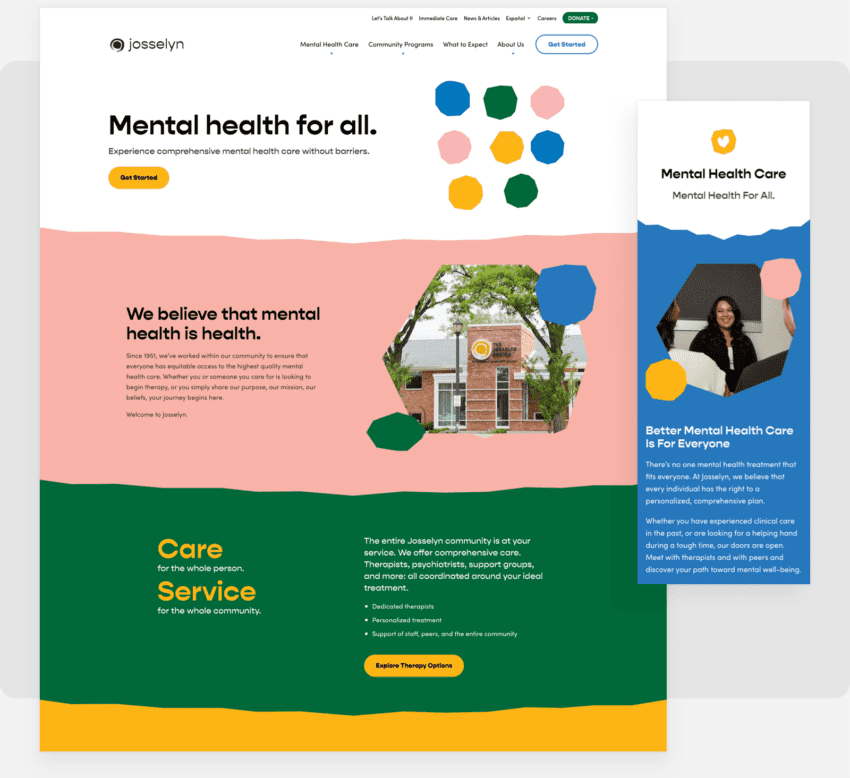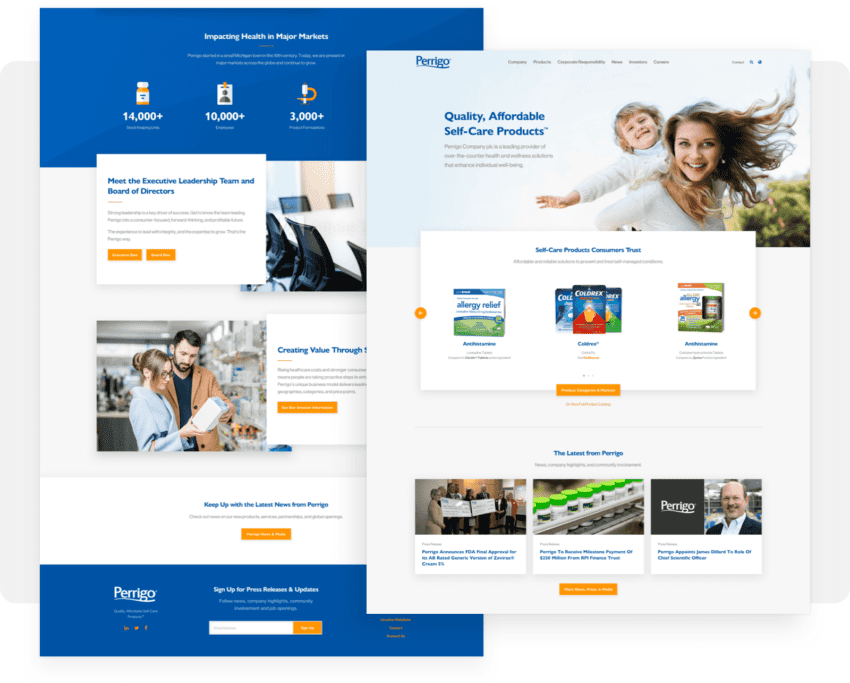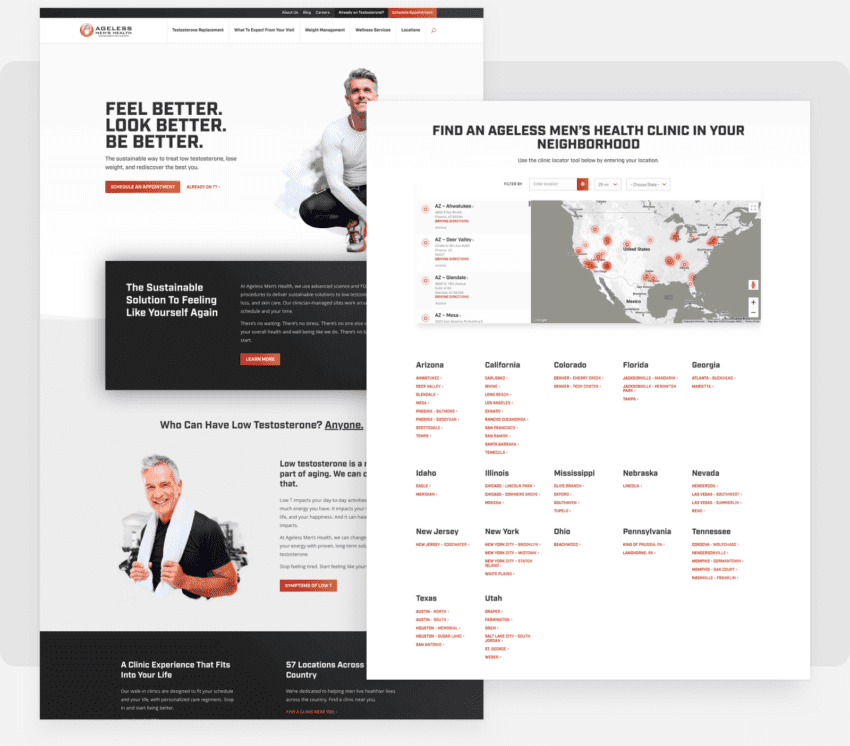Features for physicians and private practice
The primary goal of this type of website is to bring more patients into the office. The website should include these three basics:
- Online appointment scheduler
- Menu of services
- Map & directions

Search is a cost-effective marketing solution that reaches the growing audience. There is an estimated 160 million health related searches on Google each day.
It is the beginning of the consumer-to-patient journey. It is also the beginning of the sales funnel. Doctors and hospital administrators go to Google to research new equipment and medical devices. All these searches lead to a website.
Across the medical industry, from private practices to equipment and device suppliers, online marketers drive business to websites. For website design to improve conversions, there are few essentials, from SEO to content, that you have to do right. Here are three fundamentals for healthy conversions:

Average YoY organic traffic lift from the last 50 projects (as of 7/23)
Successful website launches in last 12 months
Net Promoter Score for all clients in 2022

There is no one-size-fits all approach to web design. The design and functional requirements depend on what the visitor expects to do on the website.
For a private practice, the patient wants to schedule an appointment online. To order medical equipment online, the website will need to fitted with an e-commerce solution. We’ll take closer look at website features across the medical industry.
The primary goal of this type of website is to bring more patients into the office. The website should include these three basics:
For larger organizations, feature prioritization will need to take into consideration both the needs of the site visitors and the capabilities of the organization’s internal systems when it comes to scheduling and other process-driven features. Here are three basics to include in the requirements:
This category of websites serves a B2B audience. Visitors will want to see product images and details. This also can support sales representative when they are onsite. Three basic features to consider:
We’re focused on creating exceptional work for clients








With over a decade of experience and hundreds of projects, we have built a reputation as a trusted web design and development partner. Get in touch with us when you’re ready to talk about your medical website project.